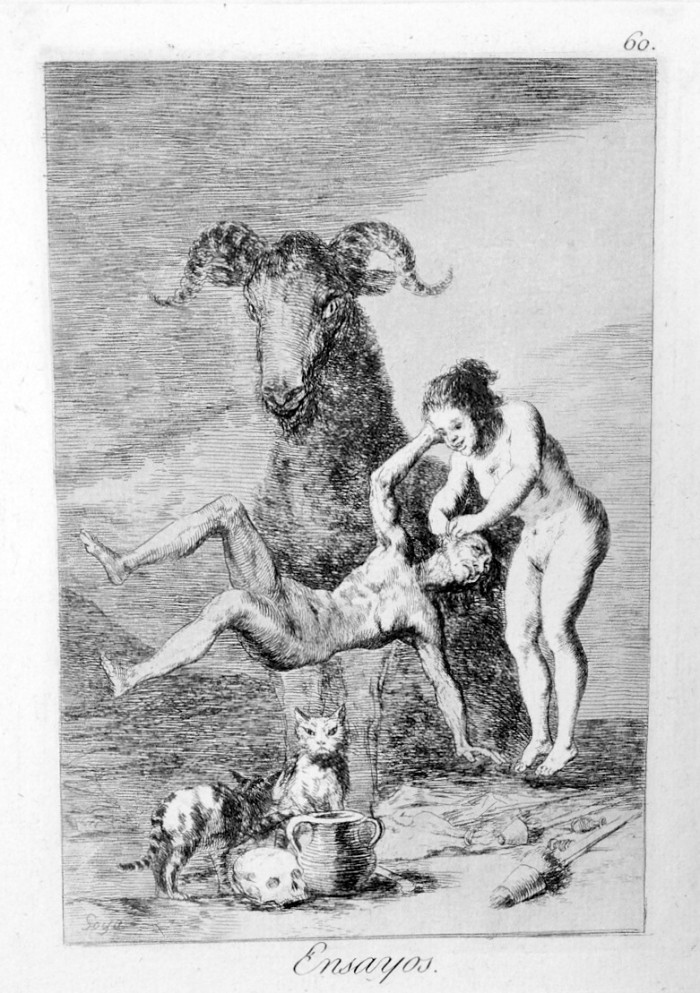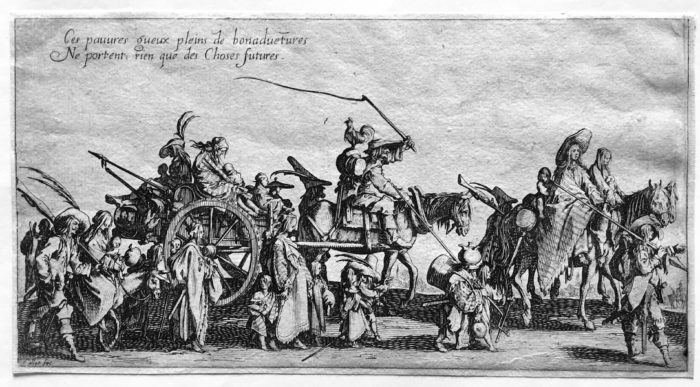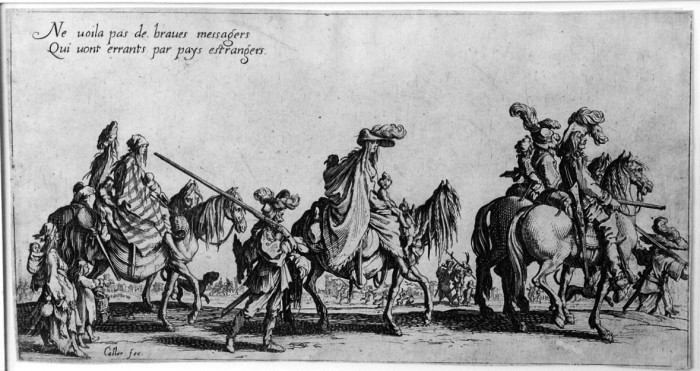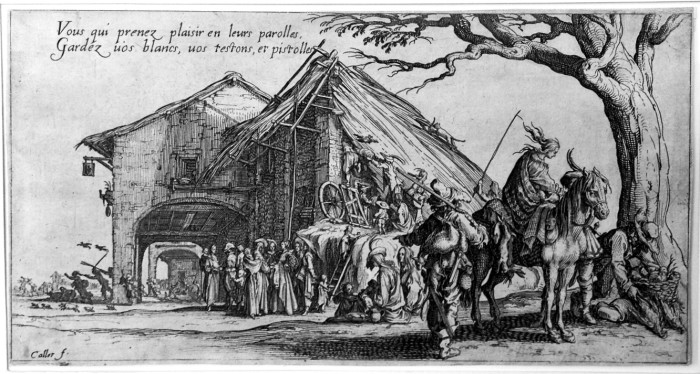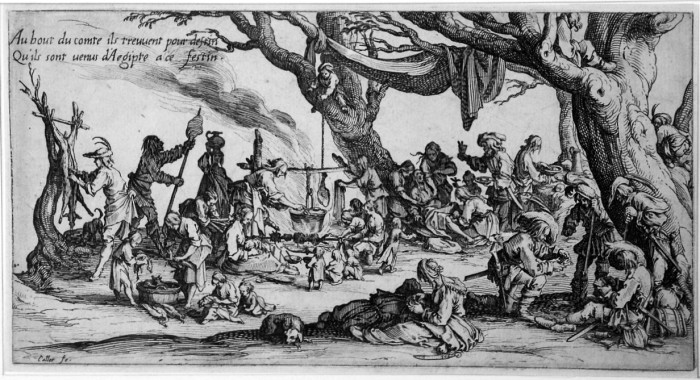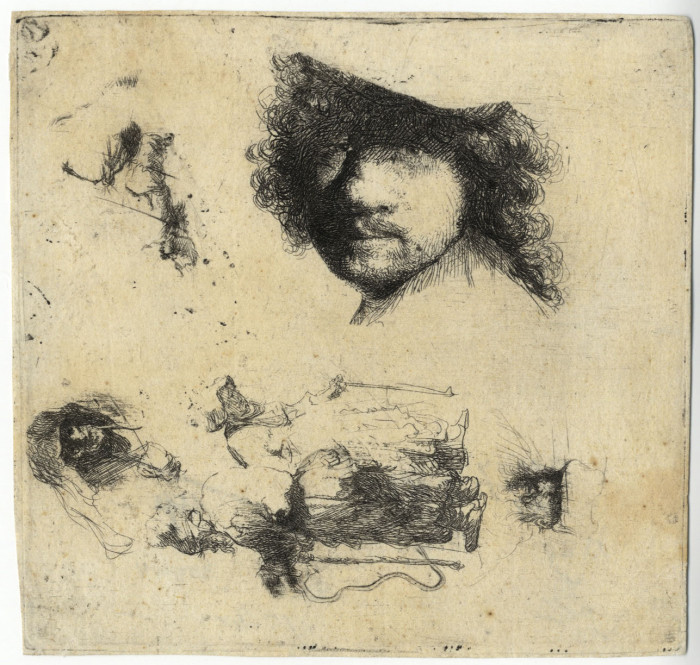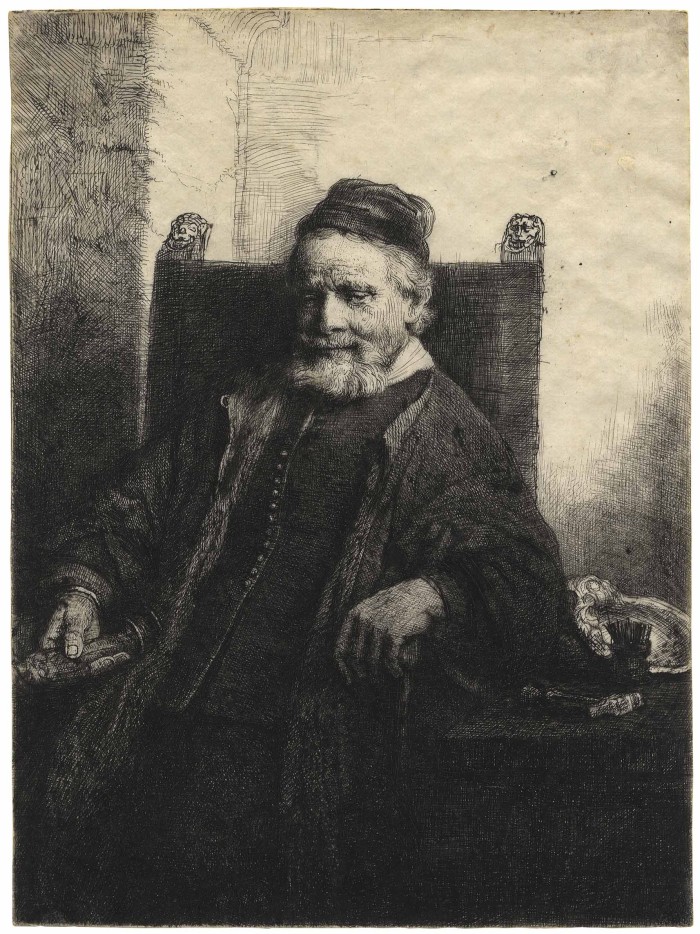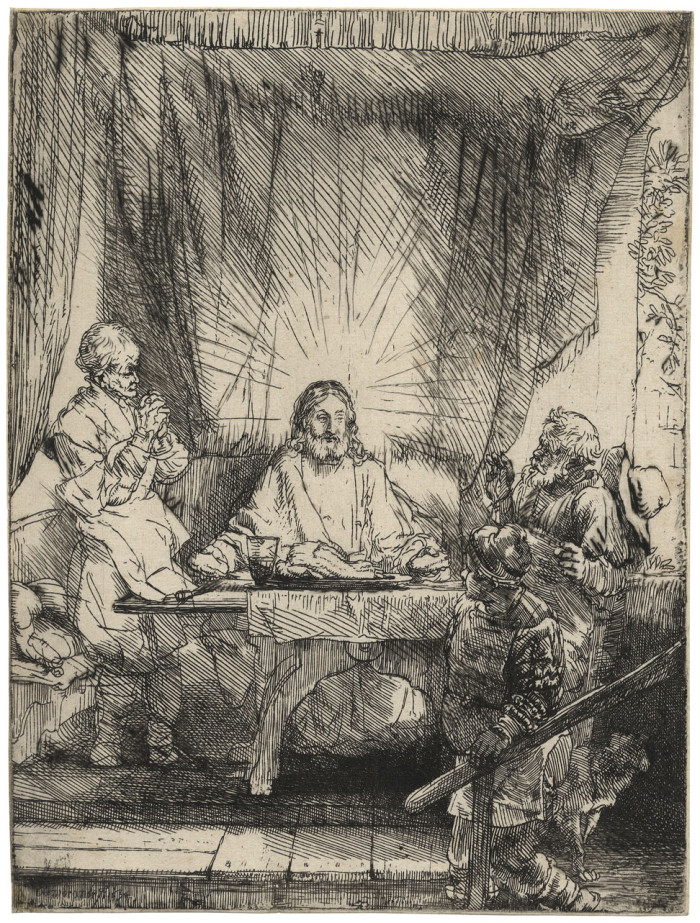Ensayos (Trials)
Tuesday, August 26th, 2014
Francisco Goya (1746-1828), Ensayos (Trials), etching, aquatint and burin, 1799. Plate 60 of the Caprichos, First Edition. Harris 95, Delteil 97. In very good condition (with the binding holes showing at left), printed in sepia on a soft but strong laid paper, 8 1/16 x 6 1/2, he full sheet, 12 1/16 x 8 3/4 inches.
A fine impression.
Harris notes that the fine grain aquatint in one pale tone contrasts with the highlights on the central figure’s chest, the cat and the skull in the foreground, and with the highlights on the ‘teacher,’ particularly in the early impressions where the aquatint forms a line across her stomach. In this impression these aquatint highlights are quite prominent, as is the line across the teacher’s stomach.
Goya’s commentary: “Little by little she is making progress. She is already making her first steps and in time she will know as much as her teacher. ” The drawing in pen and sepia ink has a legend elucidating this note: “Trial of novice witches on their first flight and they set to work with fear.”
